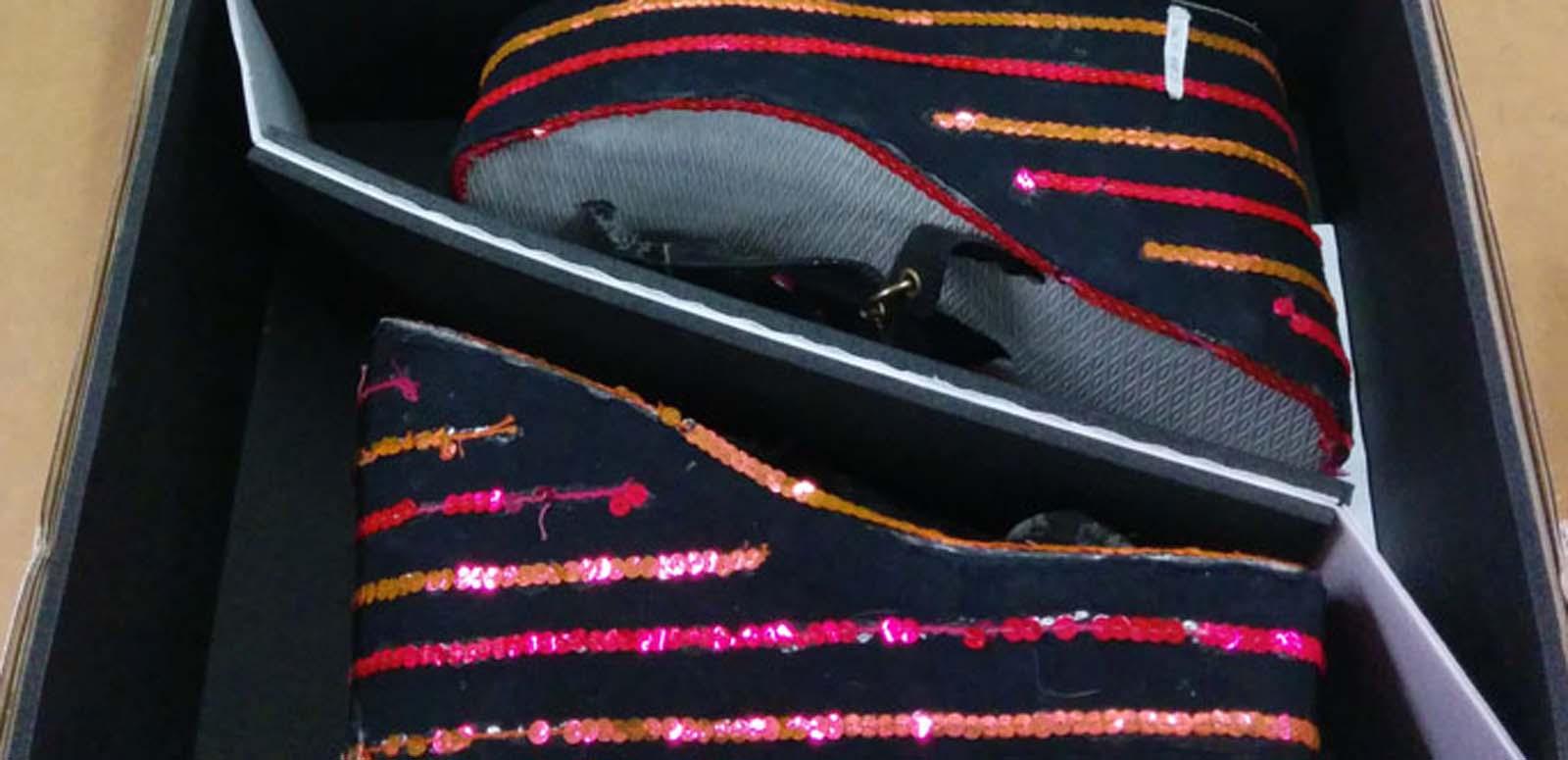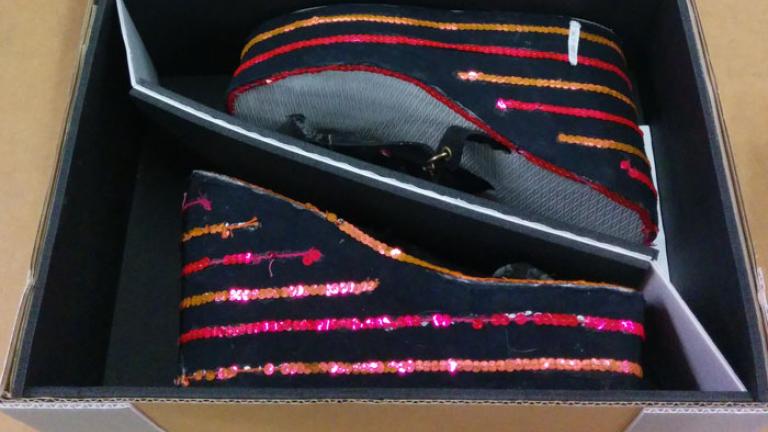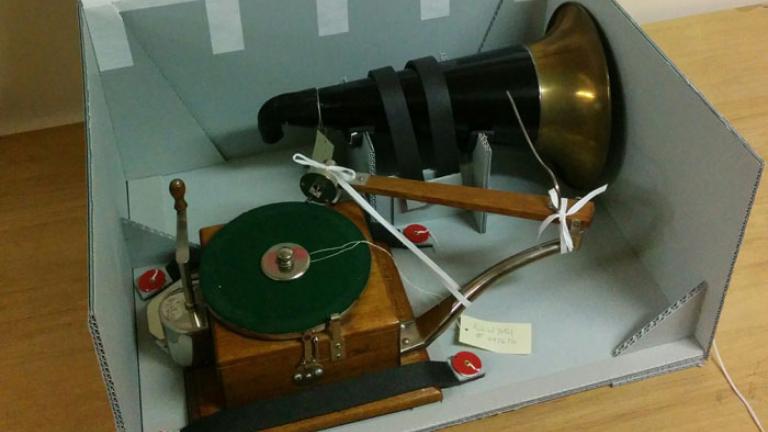

How NFSA keeps 2 million collection items safe
Collection Services Coordinator Stewart Shannon reveals some of the tricks and secrets that the NFSA Collection Management team use to keep the national audiovisual collection safe.
You have to be very organised and diligent when you have more than two million items of cultural and historical significance under your care.
At the NFSA, that responsibility is in the hands of our Collection Management team: a group of professionals following best practice international standards – set by the Heritage Collections Council – so that every single one of our collection items is stored in optimum conditions to ensure their long-term survival.
When not undertaking retrieval and delivery of collection items for our curators and the rest of the NFSA, the Collection Management team keeps busy by maximising the use of storage space and improving the actual conditions of the collection. They achieve this by repackaging, conducting visual inspections and re-labelling. These activities are often undertaken in conjunction with major relocation tasks, and all this work is referred to as ‘collection care’.
THINKING INSIDE THE BOX
In many cases boxes are custom made because most items are donated to the NFSA without packaging. Due to the various shapes, sizes and weight, off-the-shelf boxes are difficult to purchase from retailers, so the Collection Management team creates boxes tailored especially to the object. In the last 12 months, staff member Murray Kirkland produced more than 40 boxes for rare and fragile collection items. You can see some examples in the gallery below.

Custom-made shoe box for platform heels from 'The Adventures of Priscilla, Queen of the Desert' (1994)

Model prop from feature film 'On the Beach' (1959) in custom-made box

Berliner Phonograph in custom-made box
ON THE MOVE
In December 2013, the NFSA opened its new storage facility, which is often called Mitchell Five or M5. As a result, we started relocating selected collection items to M5, including 65,727 film carriers of varying sizes and weights from cold stores. This took approximately four months.
Within our other facilities, we also had to relocate 4,542 daybill posters, to allow for the installation of two new poster cabinets. These are manufactured by BAC Systems and are made of heavy gauge steel and fitted with a cylinder lock.
When you’re dealing with a ‘living’, growing collection, not everything can be planned and sometimes you have to respond to unexpected needs. For example, when the NFSA acquired a large number of 35mm distribution prints, it was vital that these were wound from reels (used for projecting prints in a cinema) to cores (a centre hub that allows for better air circulation, used for long-term storage) to ensure optimal storage conditions and preservation standards. So Collection Management staff had to manually wind 330 items – approximately 660,000 feet of film!
FROM BUBBLE GUM TO FABRICS
We regularly conduct reviews and implement storage efficiencies within our climate-controlled storage areas. We recently reviewed packaging of our memorabilia collection. We gained additional space and removed non-archival quality packaging material, like plastic bubble wrap that may have been packed with the item when it first came to the NFSA.
This review also allowed us to obtain further technical information about memorabilia items, including size and format. These details are used to update our records and are then included in new barcodes and labels so that the new information is easily visible.
Two items of interest that we identified during the latest review were a CD created out of bubble gum and an invitation to a premiere of a TV series, printed on a hospital towel. The novelty bubble gum CD is considered perishable and, as a result, deterioration will be monitored into the future. There are, however, no specific storage specifications.
Koalas Down Under Fairdinkum CD - Cover to novelty CD made of bubble gum
Koalas Down Under Fairdinkum CD - Novelty CD made of bubble gum
Koalas Down Under Fairdinkum CD - Back cover to novelty CD made of bubble gum
Invitation to premiere screening of 'Whose Baby?' (1985), printed on a hospital towel
Invitation to premiere screening of 'Whose Baby?' (1985), printed on a hospital towel
Invitation to premiere screening of 'Whose Baby?' (1985), printed on a hospital towel
We recently started the inspection of textiles, which includes not only costumes but also posters printed on fabric, props used in film and TV productions, and memorabilia items. This work is vital to ensure correct packaging and to note and respond to any physical deterioration of items including accumulated dust, discolouration, fading or signs of moth, silverfish or carpet beetle infestation. Happily we can report no evidence of infestation or deterioration within the textile collection.
As you can see, there’s always something going on in the world of collection care at the NFSA.
The National Film and Sound Archive of Australia acknowledges Australia’s Aboriginal and Torres Strait Islander peoples as the Traditional Custodians of the land on which we work and live and gives respect to their Elders both past and present.


